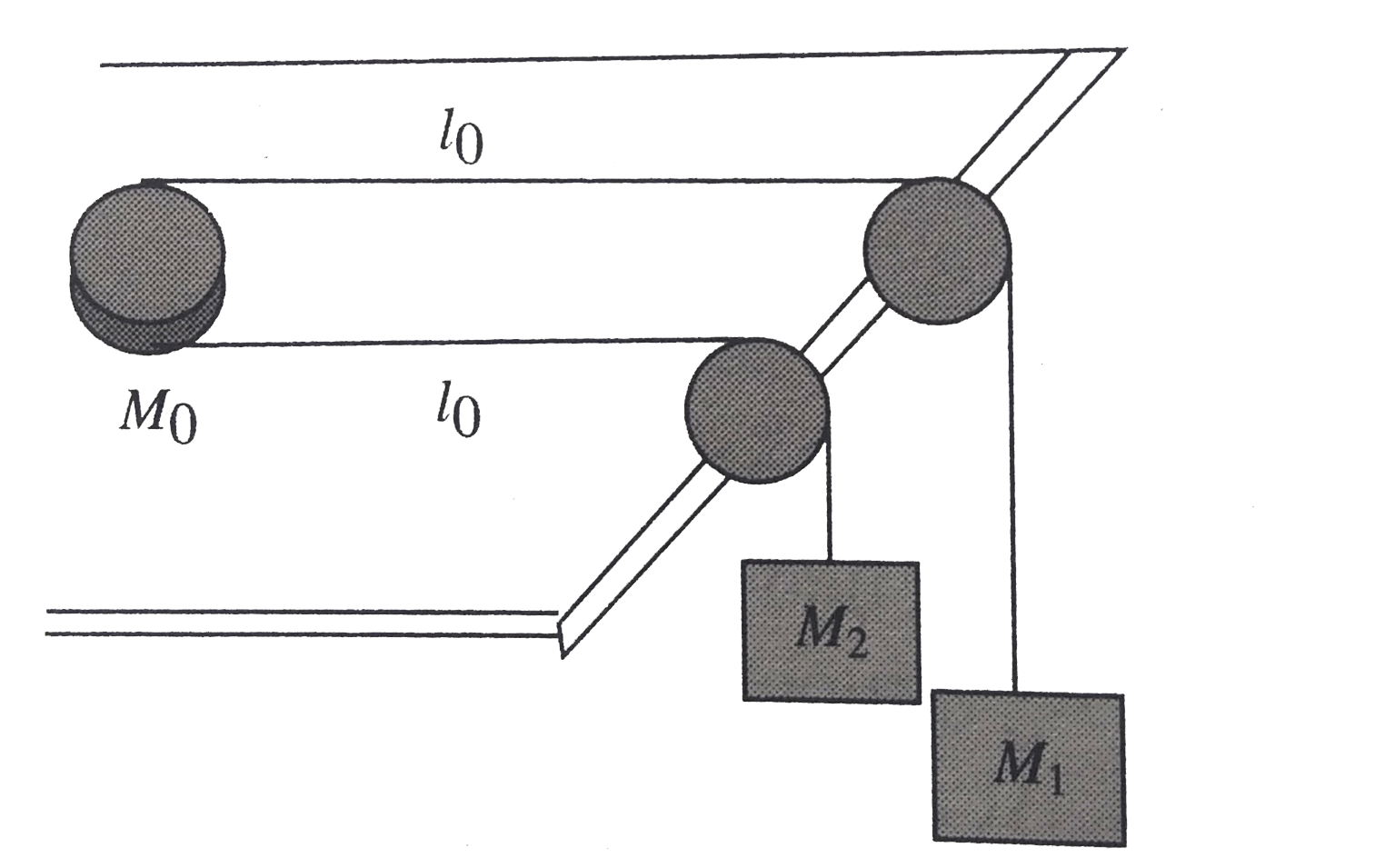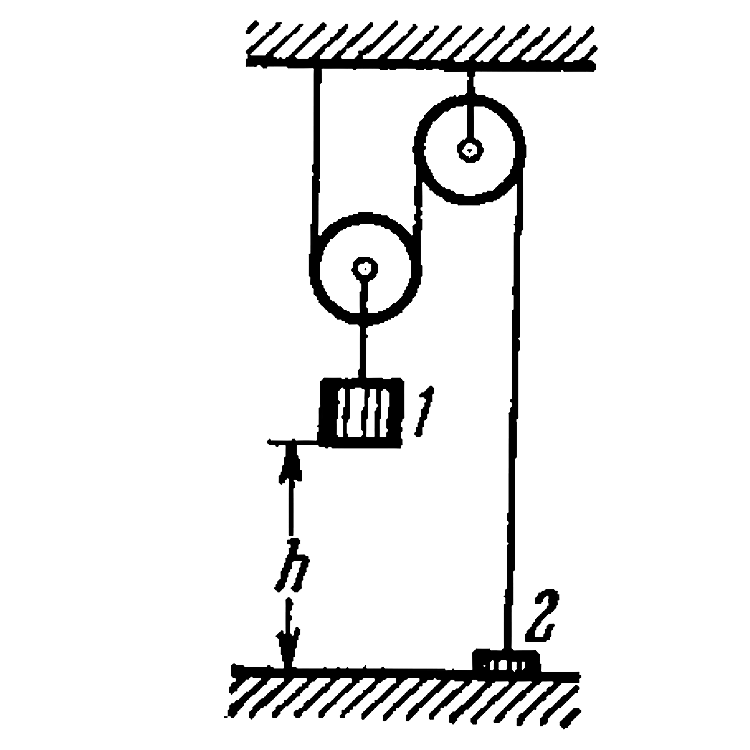example from BHARATI BHAWAN PHYSICS Chapter 18 LAWS OF MOTION, FREE BODY DIAGRAM for Class 11
| Class 11 | PHYSICS |
| Chapter | LAWS OF MOTION, FREE BODY DIAGRAM |
| BHARATI BHAWAN PHYSICS | example |
| Medium | English |
| Academic Year | 2023-2024 |
Question 6
A gun (of mass M ) whose barrel makes an angle α with the horizontal fires a shell (of mass m ) . The gun is mounted on a frictionless track , so that recoil takes place with no resistive forces . Find the recoil velocity V of the gun and the absolute velocity of the shell in magnitude and direction if the muzzle velocity of the shell relative to the barrel is v . View SolutionQuestion 9
A smooth pulley A of mass M0 is lying on a frictionless table. A massless rope passes round the pulley and has masses M1 and M2 tied to its ends, the two portions of the string being perpendicular to the edge of the table so that the masses hang vertically. Find the acceleration of the pulley.
 View Solution
View SolutionQuestion 10
A dynomometer D (a force meter ) is attached to two masses M = 10 kg and m = 1 kg . Force F = 2 kg f and f = 1 kgf are applied to the masses . What will applied to the masses . What will the dynamometer show if :
(a) F is applied to M and f ot m
(b) F is applied to m and f to M
(c) if M = m = 5 kg .
 View Solution
View SolutionQuestion 13
In the arrangement shown in figure the mass of body 1 is η=4.0 times as great as that of body 2. The height h=20cm. The masses of the pulleys and the threads, as well as the friction, are negligible. At a certain moment body 2 is released and the arrangement set in motion. What is the maximum height that body 2 will go up to?
 View Solution
View SolutionQuestion 14
A pulley is attached to one arm of a balance and a string passed around it carries two masses m1 and m2 . The pulley is provided with a clamp due to which m1 and m2 do not move . On removing the clamp m1 and m2 start moving . How much counterweight is to be reduced or increased to restore balance ?
 View Solution
View SolutionQuestion 15
Two men A and B each of mass m sit in light cages at the ends of a light flexible rope passing over a smooth pulley . Initially they are at rest . A being higher than B by it . Suddenly a mass m/10 is handed over to B which he immediately throws up to A . Prove that by the time A catches the thrown mass , he moves up by a distance 2h/19 and that he stops ascending after he has ascended a total distance 59h/361. View Solution

